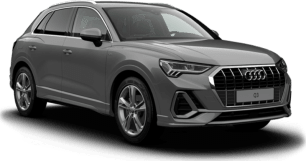Let’s start with the less powerful 35 TFSI, if only because - even though we know better in 2022 - there’s a temptation to think a 1.5-litre engine will be underdone. The reality, however, is that you’re not going to drive this car and judge it as anything other than very resolved.
While it’s true the peak power of 110kW isn’t startling, it’s the way it’s delivered (along with the 250Nm of torque) that sets the mood here.
Like many late-model Audis, this one has an engine with a fizzy, zingy feel that makes you want to rev it just to hear and feel it. And when you do, it pays off with plenty of flexibility and a sophisticated, refined feel.
Whether the mild hybrid driveline is adding anything to the formula is debatable, because the technology is so seamless you won’t pick what it’s doing other than the engine stop-start function, which is one of the better ones we’ve sampled.
Move from the 35 into the 40 TFSI and you immediately notice the extra power and torque on tap. And although it’s still not a hot-hatch by modern standards, there’s always enough urge to make the 40 TFSI a convincing driver’s car.
Again, the power delivery is the key to it all, making more of what the engine has to offer by actively encouraging you to use it. The seven-speed dual-clutch transmission is your friend here.
The extra driveline functionality of the 40 (namely the AWD system) actually means less than you might imagine in day-to-day life. We didn’t get to drive the car in the wet, but it’s fair to say that those conditions (or a loose, gravel road) are really the only ones likely to make a difference to the way the basic platform feels.
That’s for two reasons; the first being the all-wheel-drive is fundamentally on demand anyway and, secondly, the basic platform is so composed and balanced in the first place, that the Quattro system will spend a lot of its time hiding in the background.
The 40 TFSI also get the selectable drive modes which break with tradition by actually making a difference to the way the car feels.
But the reality is that if you took the best bits of every other setting (Comfort, Dynamic and Efficiency) and loaded them into the Individual button, you’d probably wind up with something very close to what the non-adjustable 35 TFSI offers in the first place.
You have to admire the way Audi has made a front-drive car in the A3 steer, handle and talk to the driver in such a clear, precise way.
Yes, the 40’s selectable modes add another layer to that, but only if you can be bothered. Even more than that, the A3 in either form feels like its ultra-stable and safe, while the levels of feel and feedback give the impression they were decided upon by people who enjoy driving.

